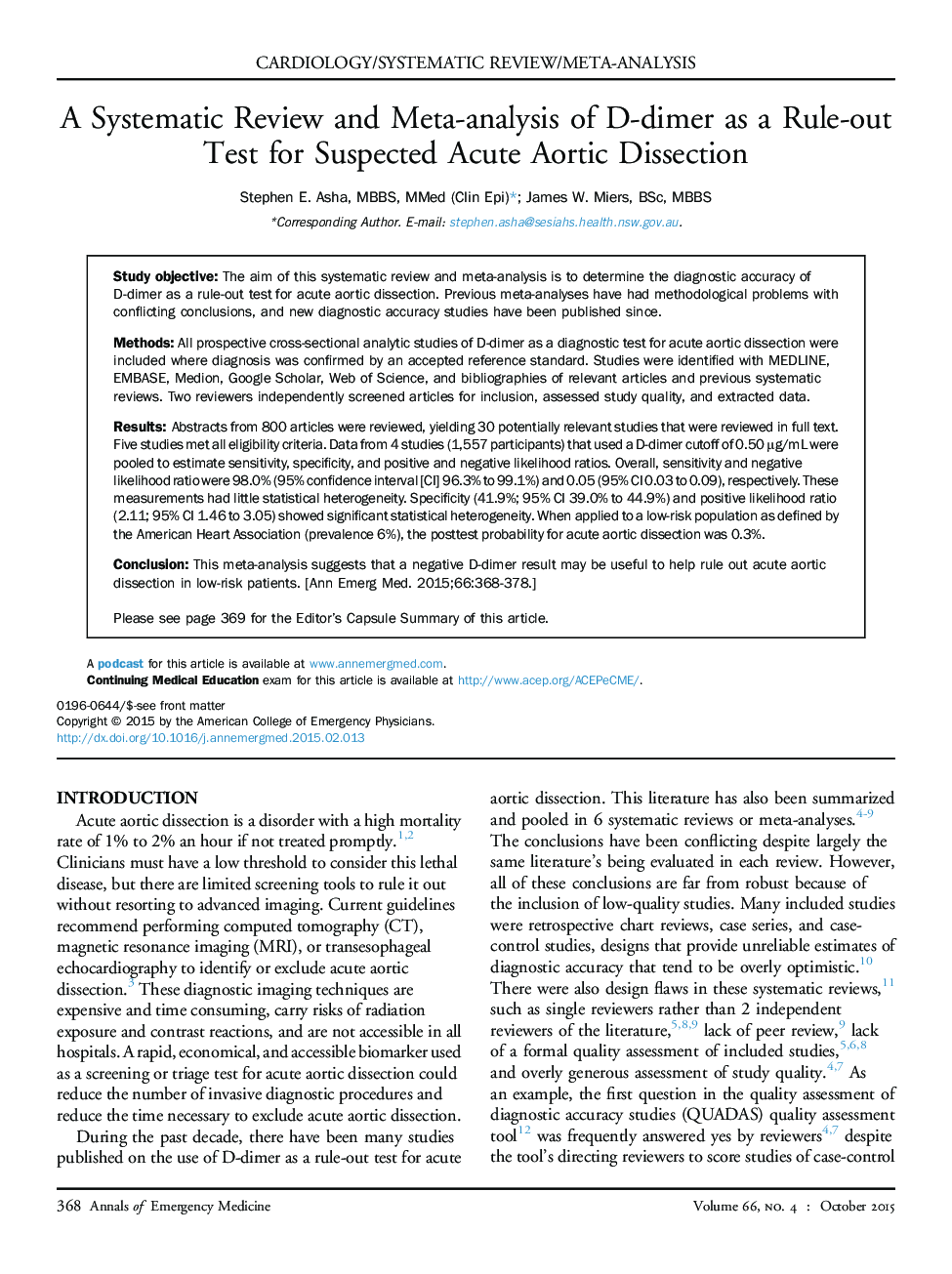| Article ID | Journal | Published Year | Pages | File Type |
|---|---|---|---|---|
| 3228615 | Annals of Emergency Medicine | 2015 | 11 Pages |
Study objectiveThe aim of this systematic review and meta-analysis is to determine the diagnostic accuracy of D-dimer as a rule-out test for acute aortic dissection. Previous meta-analyses have had methodological problems with conflicting conclusions, and new diagnostic accuracy studies have been published since.MethodsAll prospective cross-sectional analytic studies of D-dimer as a diagnostic test for acute aortic dissection were included where diagnosis was confirmed by an accepted reference standard. Studies were identified with MEDLINE, EMBASE, Medion, Google Scholar, Web of Science, and bibliographies of relevant articles and previous systematic reviews. Two reviewers independently screened articles for inclusion, assessed study quality, and extracted data.ResultsAbstracts from 800 articles were reviewed, yielding 30 potentially relevant studies that were reviewed in full text. Five studies met all eligibility criteria. Data from 4 studies (1,557 participants) that used a D-dimer cutoff of 0.50 μg/mL were pooled to estimate sensitivity, specificity, and positive and negative likelihood ratios. Overall, sensitivity and negative likelihood ratio were 98.0% (95% confidence interval [CI] 96.3% to 99.1%) and 0.05 (95% CI 0.03 to 0.09), respectively. These measurements had little statistical heterogeneity. Specificity (41.9%; 95% CI 39.0% to 44.9%) and positive likelihood ratio (2.11; 95% CI 1.46 to 3.05) showed significant statistical heterogeneity. When applied to a low-risk population as defined by the American Heart Association (prevalence 6%), the posttest probability for acute aortic dissection was 0.3%.ConclusionThis meta-analysis suggests that a negative D-dimer result may be useful to help rule out acute aortic dissection in low-risk patients.
